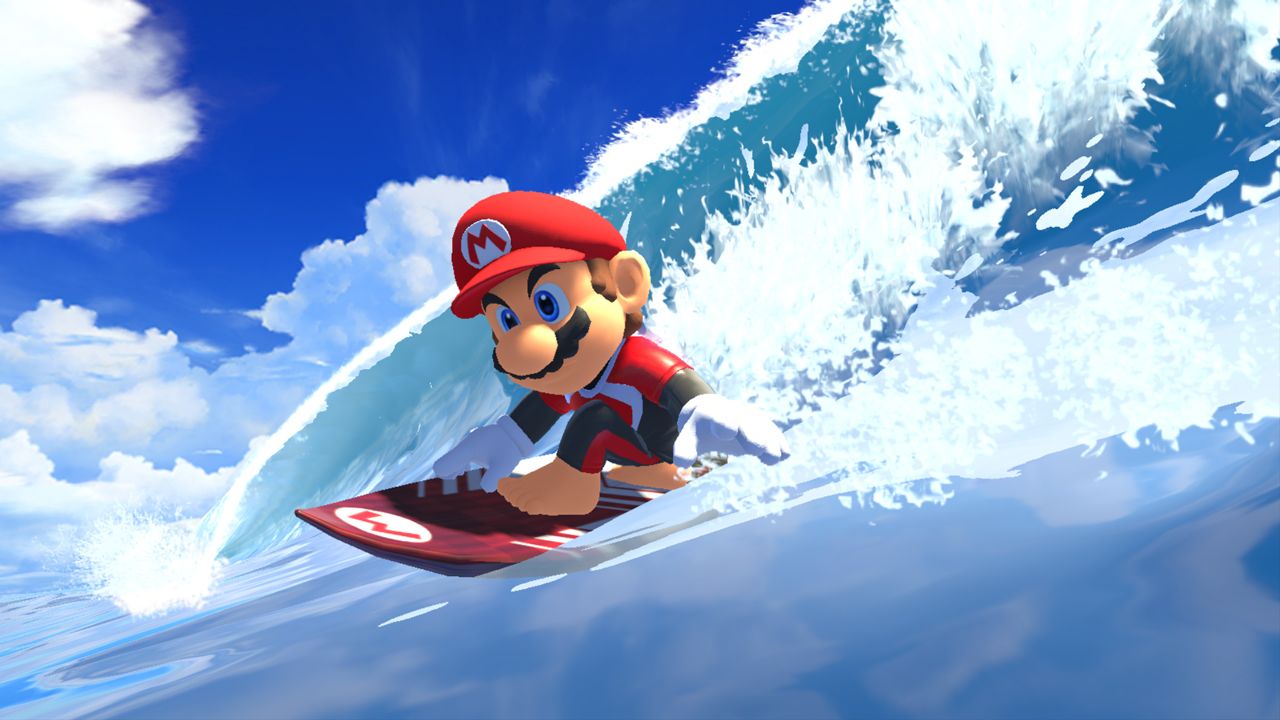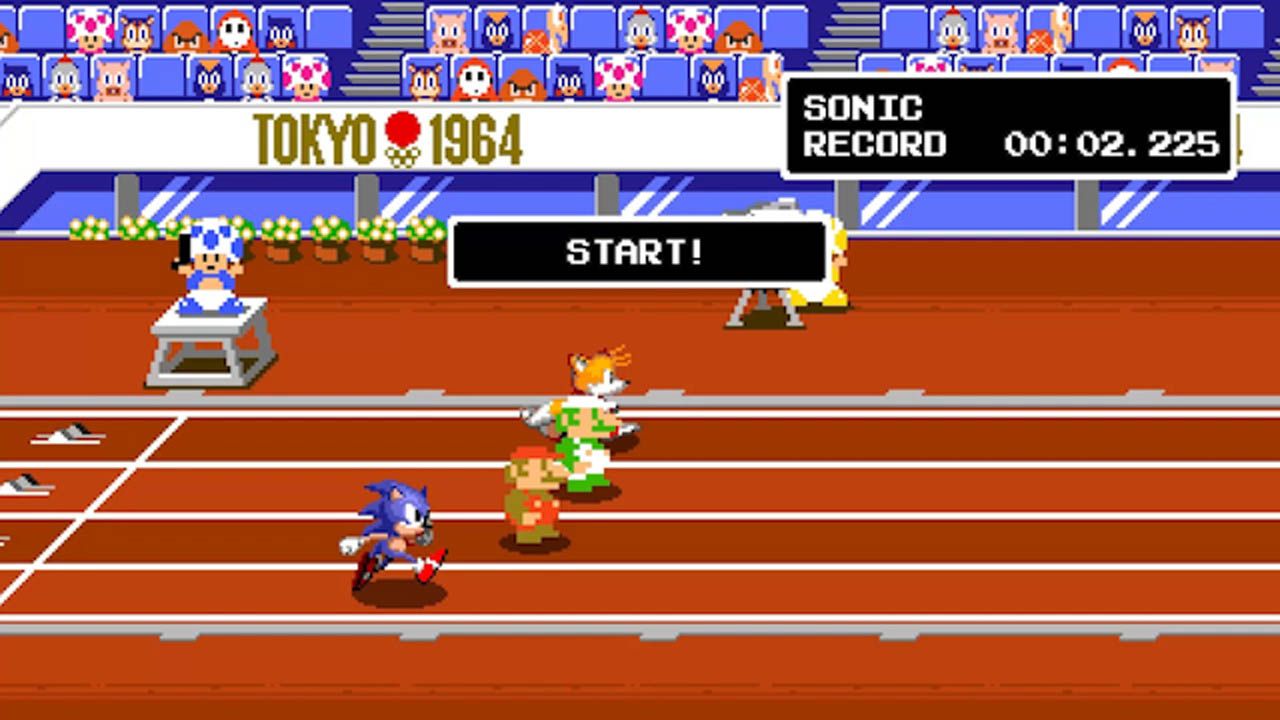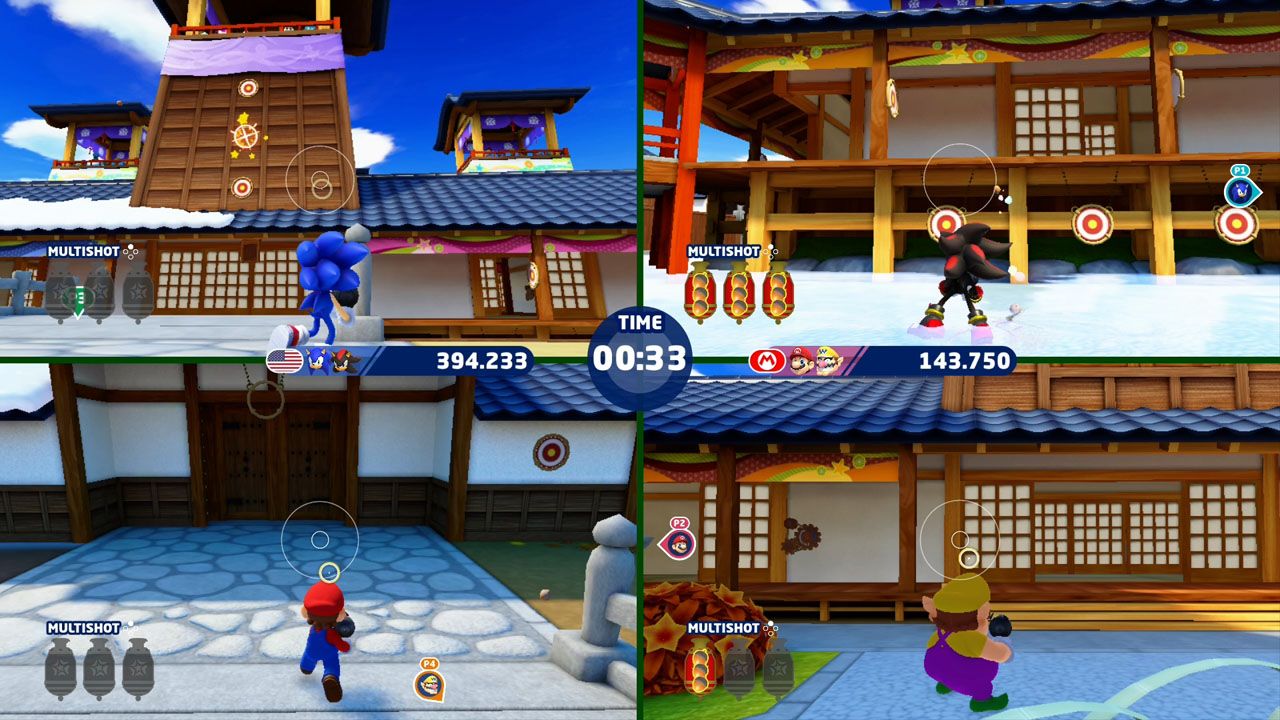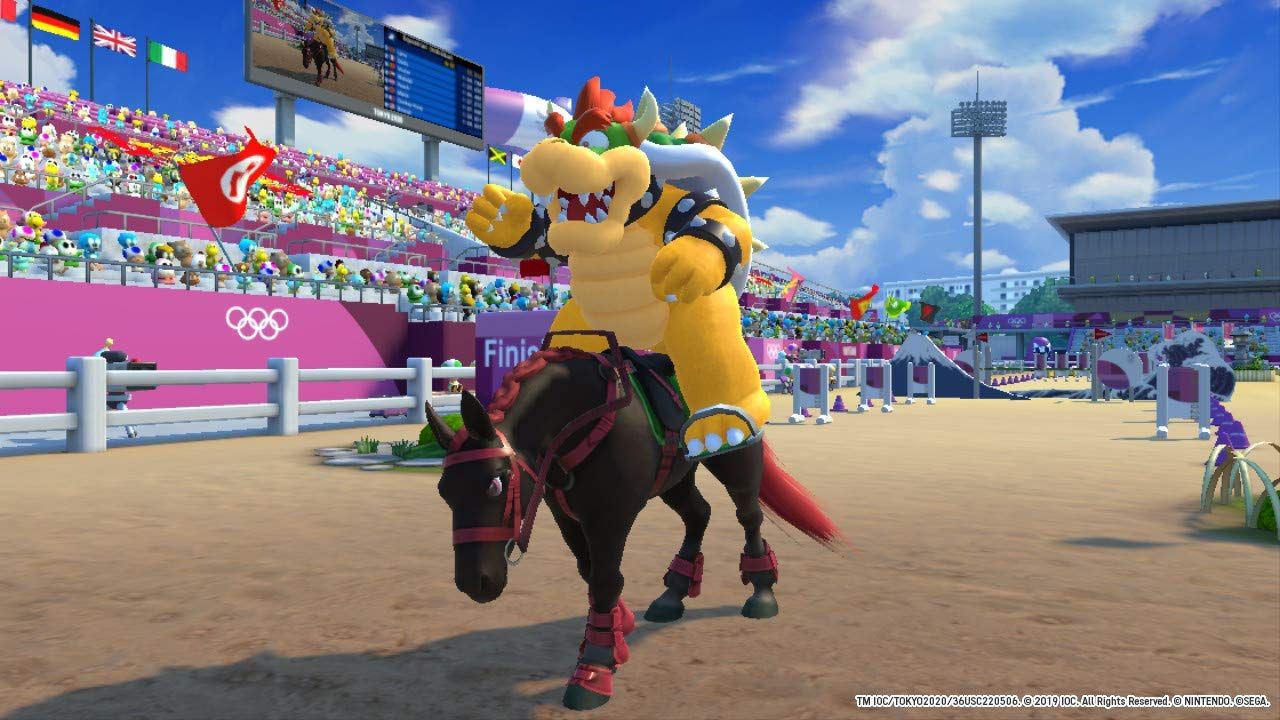Mario & Sonic at the Olympic Games Tokyo 2020 Review
Has the Olympic spirit, but not too much else
Video games that get a license to officially recreate sporting competitions are nothing new. From the NHL and NBA to MLB and FIFA, the sports video game market is huge. Less popular activities also get the occasional nod, such as skateboarding, snowboarding, and so on. But perhaps the biggest sporting event of all – the Olympic Games – hasn't seen as much interest from the gaming community. There's been official games based on the competition since 1984, but they rarely rose above being a collection of simple minigames. Nintendo has decided to embrace this approach and throw their popular characters into the mix, with their Mario & Sonic at the Olympic Games franchise that started in 2007. The newest entry, Mario & Sonic at the Olympic Games Tokyo 2020, very much continues this trend.

To provide some structure to the sporting events, players can go through the included story mode. It's a thin narrative that sees Doctor Eggman and Bowser try to trap Mario and Sonic in a classic video game machine. However, they all end up getting sucked in together, and find themselves at the Tokyo 1964 Olympic Games. In this 2D, retro era, Eggman reveals that earning gold medals is their only way to escape, so the two pairs compete in the various included events. Back in the real world, Luigi finds the machine and realizes the predicament, and runs around Tokyo trying to find help from other characters, who join his roster, such as Tails, Yoshi, Princess Peach, and more.
The narrative is pretty simple, and the cutscenes that feature text boxes and characters simply staring at each other, actually feel like they drag on for a bit too long. Given that the events themselves often take just a minute or two to complete, you spend most of your time in story mode just reading conversations that are very basic and will be rather boring for all but the youngest players. You can also visit a few different places in Tokyo (both in past and present) via an overhead map. Each location either contains a sporting event, or just a small area to walk around in. These areas have a few NPCs and markers that offer historical tips and trivia about the Olympics and the Nintendo characters. The final unique selling point of the story mode is 10 custom minigames, but these are largely repetitive and simple. On the whole, the story mode is fairly dull and doesn't add a ton of content over just playing the sporting events.
Instead, players can access all of the minigames right from the main menu via Quick Match mode. In the modern setting, there are 21 real events and 3 Dream events; players can also jump to Tokyo 1964 and compete in 10 events in that era. The inputs for most events are simple, and you have a choice of using motion controls or just the buttons; for the 1964 events, only buttons can be used. You can also select one of three AI difficulties, and play as any of the characters (there is no unlock system for any of the content). All events feature some version of a super meter that charges up and lets you unleash powerful strikes/shots. The characters have different strengths for each minigame – they can be all-around, speed focused, tighter to control, and so on.
The modern sports include track events such as 100m sprint, hurdles, and 4x100 relay. These activities mostly focus on charging up, tapping/moving the controllers as fast as possible, and perhaps timing a few more button presses. Javelin Throw, Discus Throw, and Triple Jump follow similar gameplay mechanics, while also asking the players to account for the angle/direction during the final moments. These are basic events, and each one gives you a few rounds to get the best result. Water events are similar and fairly shallow; in Canoe, you paddle with the thumbsticks, with a final push near the end. In Swimming, you perform designated motions with the stick, and make sure to match the Quick Time Event at the other end of the pool to make a good turn.

Archery is pretty simplistic, as you draw and shoot after adjusting your aim to account for any wind. Sport Climbing is also straightforward, as you choose a direction and must time your jumps to the next handhold when the cursor moves over it. In Gymnastics, you perform a floor routine by charging up, and following QTE prompts, before sticking the landing with a timed button press. There are also moments to balance your pose by again trying to match a moving cursor. These events are more complex in their mechanics and yet not any more fun than the track and field ones.
Direct competitive events include Boxing, Karate, and Fencing. For all three, both opponents are on a 2D plane so you can only move back and forth. You can attack high and low, block/parry, and in Fencing there is a line that indicates if you're within striking range. The gameplay in these events is fairly simple and the controls are not very responsive, so don't go in expecting a proper fight. There's also the Equestrian event, where you gallop around the course, adjusting direction, managing the horse's stamina, and timing jumps with a button press. It's an okay event, but not exactly thrilling or that much fun, and the horse isn't all that responsive to turns.
Some events include the option to compete solo or in a team. In Badminton, the characters move automatically to receive/serve so you can focus on where and how you want to strike. You can shoot to the center/left/right, and front/back of the court, as well as time your shots well. In Table Tennis, the mechanics are similar, choosing to return left or right, and timing your serve. Because these events are based on more dynamic sports, they are a bit more fun to play.
With a few other events, players get a bit of freedom to move about in a 3D space. In Skateboarding and Surfing, you are tasked to perform tricks within the time limit. The skateboard park is a small open space to roll around in, and your biggest focus is on pressing jump at just the right moment as you hit the top of the ramps. You can do a few tricks by using the sticks, and perform a balancing minigame if you grind the ramp edge. Similarly, surfing has you catching a wave and pressing the jump button as you hit the crest. Both these events are fairly fun as you try to run up the high score.
For team sports, there's Football and Rugby Sevens. In Football you can choose a formation and strategy, and run around the field trying to score. There are tackles, fouls, corners/throw ins - all you need to make it believable and pretty entertaining. Similarly, Rugby Sevens is simple to play as the passes will automatically go backwards, characters will lock overtop of loose balls, and it's satisfying to get a try. Both of these represent a simplified version of the real sport and are brief, but both are pretty fun to play regardless.

To provide some more variety, you can jump into one of three Dream Events, which are basically arcade games not based on any real sport. In Dream Racing, you skate down fantasy courses full of jumps, boosts, and simple item pickups. In Dream Shooting, you run around a 3D town and attack targets for points. And in Dream Karate, you fight other players on a grid that lights up with your color if you knock an opponent down; having the most colored squares at the end of time limit wins you the game. All of the Dream events are fun enough distractions, and certainly make for better minigames than those found in the Tokyo 1964 story mode.
Speaking of which, in addition to all the modern events described so far, there are also Tokyo 1964 events to play. In this mode, the game switches to 2D and 8-bit / 16-bit visuals with a chiptune soundtrack – it looks and sounds exactly like Nintendo games of the past. The events here only use buttons, and characters do not have any special advantages, but the mechanics remain largely the same. Sprint, Hurdles, Kayak, and Long Jump are unchanged in their press/spam and adjust angle mechanics. The Vault and Dive events are like modern Gymnastics, though you get to choose what QTE inputs you want to see as you perform the mid-air rotation. In Judo, you try to grapple your opponent and throw them off balance. Volleyball has you serve and return the ball, with options for spiking, blocking, and so on. And in Shooting, you try to hit clay targets on a 3x3 target grid. All of these events are fairly simple but will definitely scratch the nostalgic itch of Nintendo fans.
While the story mode is included, the obvious focus of a game such as this is multiplayer. To that end, all of the modern events can be played with up to 4 local players; Tokyo '64 events are limited to 2 players. Playing with others is fun and the way this title was intended to be enjoyed. All of the events load very quickly. If your friends have their own Switch and copy of the game, you can pit 2 to 4 consoles against each other via direct connect. There's also online play, in either ranked or free match variety. In free match, you can browse lobbies or join specific event types. In ranked, you have competitive grade and you can only choose what event to perform, while the game places you into matchmaking lobbies. All events have leaderboards, and they track your best performances. The online events seem to perform well without any indication of network lag, but for a game such as this it's probably best played in local multiplayer - so it's surprising then that the game lacks a proper tournament system so you can have a fun night of seeing who is the best at various events. After each event, you're simply returned to the main menus, so they all feel one-off and not engaging.
The visuals and soundtrack are fairly charming. The modern presentation has all the hallmarks of a Nintendo game, complete with the friendly warm visual style and all Nintendo characters well recreated. The animations and sound effects are only serviceable, however. The backgrounds are fairly static and there's little attention to detail. The texture resolution won't exactly let you mistake it for a big-budget title. There are no performance issues, whether in multiplayer or solo, or when in docked or handheld mode.

As both a "safe" corporate licensed product and a party game, Mario & Sonic at the Olympic Games Tokyo 2020 doesn't really succeed at either. Sure you can walk around Tokyo and visit a few landmark locations, but most of the environments are tiny and take just a few moments to explore and read all the factoids. And as a game, there's just too little structure - nothing to unlock and nothing to strive for. There is no ranking system or multiple-event tournaments for this to work as a satisfying party game. The included sports minigames vary in quality and you've seen most of them before if you follow the franchise at all. The title looks and sounds nice, and the throwback to the 1964 era is well done, but there's just not a ton of value here for the price.
 Comments
Comments




















